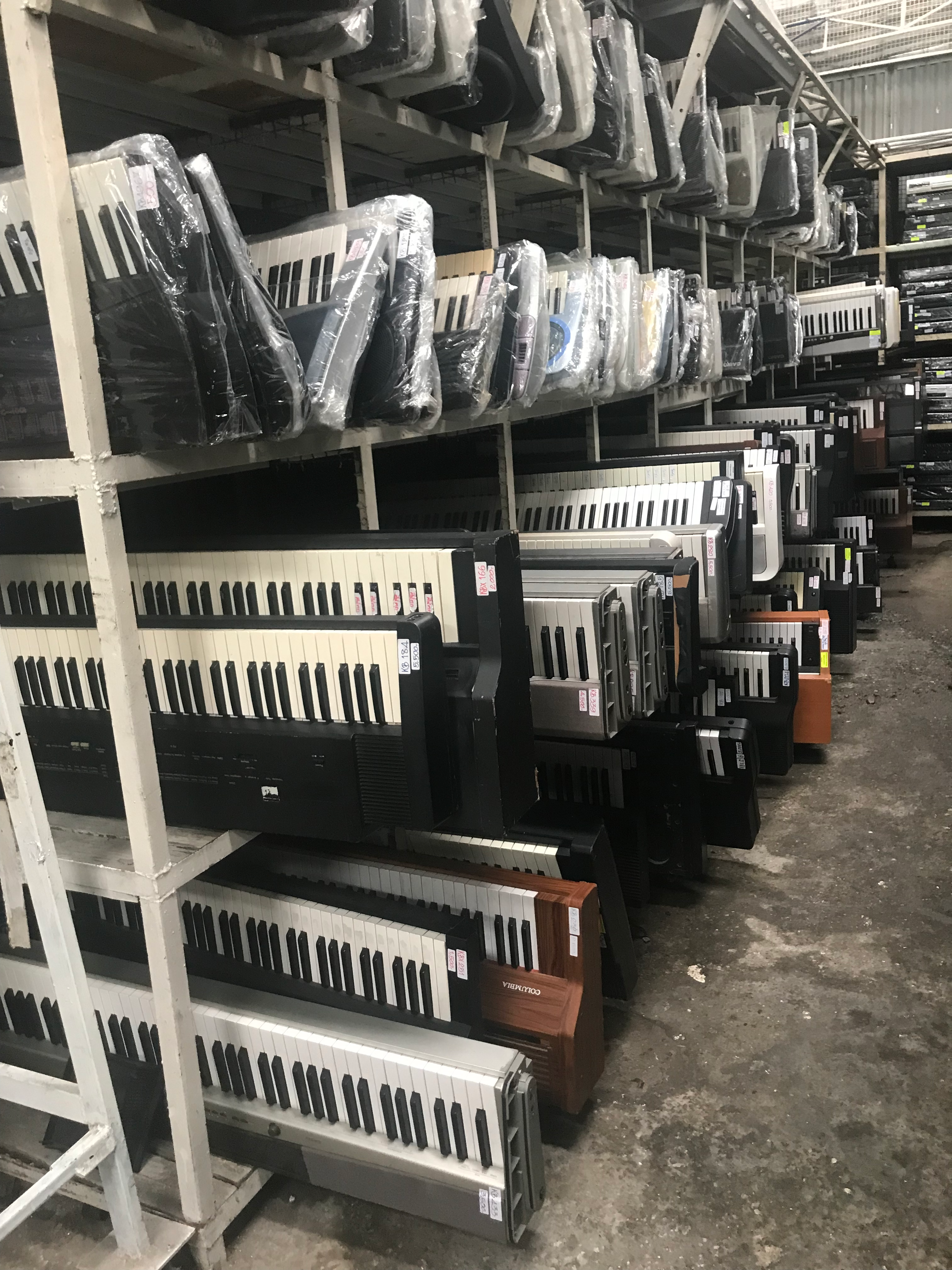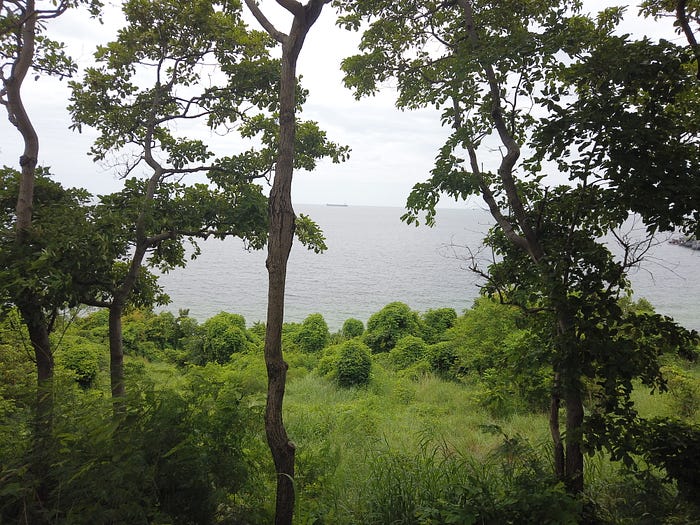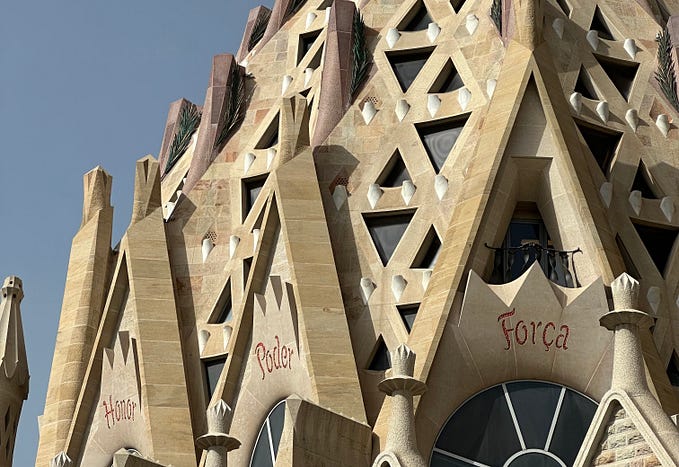No Love Lost in Thailand
Revisiting old wounds and finding inner comfort

Playing with Fire
The first time I visited Thailand, I was a giddy pre-teen in the early 2000’s who loved shopping malls, cars, street food and beach time. Not much has changed since, with the exception of shopping malls, unless its pouring outside and there is no easy access to a public restroom.
I remember travelling there together as a family and it was one of my happiest memories as a child; I remember visiting Bangkok, Pattaya and Coral Island. At the time, I had no clue of the underpinnings that ran tourism in the country, all I cared about was riding on the jetski with my father and pressing the throttle in a way he wasn’t cool with.

The trip wasn’t without its mishaps. We were visiting Safari World, a massive 480-acre zoo near the outskirts of Bangkok, wildly popular amongst tourists hoping to see and interact with several animal species from around Thailand. The zoo, now highly controversial for its ill-treatment of animals, has been on the radar of organisations like PETA (People for the Ethical Treatment of Animals) recently.
As a child, Safari World was paradise for me. It was a vibrant place full of colorful branding, tourists from all over the world and some of the most majestic animals all in one place. Only recently, I’ve stopped visiting zoo’s, unhappy when I see animals in captivity. But as a kid, I was all about it.

There was a section in the zoo where one could feed tiger cubs with milk bottles and in my excitement, I started treating it more like a puppy than a tiger cub. I was fairly unsupervised and tried to pull the milk bottle away from the cub. In a matter of seconds he snapped my thigh with his jaw and dug a little with his baby teeth. I’m not sure if the pain was excruciating or it was the shock of being bit by a tiger cub, I wailed so loud that a nearby medic didn’t take long to assist me.
They treated my wound immediately, but it left a tooth-mark on my right thigh, traces of it still visible today. My mother had the sense of humor to take a picture of me crying, and it made for great stories to tell my classmates in school. It’s not every day that one casually gets a tiger bite.
Second Time’s a Charm
This time around in 2022, I took a solo trip to the country without much planning or anticipation. I had booked accommodation for the first week at an Airbnb in Bangkok and decided to take it from there. My general idea was to stay in Thailand for a little over a month starting in September to explore the north, south and central region of the country. I could do a week in each destination, living in cheap, functional Airbnb’s and work as I travel, a dream I’d been manifesting for years.

The thing that hit me most about Bangkok was the enormous size of the city. No distance is too short here, and the only way to get around in reasonable time is by using Bangkok’s Mass Transit System, commonly known as the BTS Skytrain. It is an elevated train that runs through the city like a central artery, connecting most places where tourists and locals frequent in town.
Traffic congestion is a serious problem in the city, and a good alternative to the Skytrain is hailing a motorcycle-taxi that can get you to your destination through alleyways, sidewalks and tiny gaps between pedestrians, cars and trucks. It can also feel very risky to ride along these guys for a newcomer, but I believe Thai people have a higher appetite for risk, especially on roadways, so it helps to do a little prayer and trust them with your life.

Speaking of appetite, street food is in abundance in Thailand, especially in Bangkok. And it’s delicious; capturing all the flavors that one desires, sometimes in a single dish. Even though I’ve grown up eating vegetarian food at home and in boarding school, I am pragmatic about the challenges of finding good vegetarian food in countries where meat is sacrosanct.
In those situations, I try to find a few dishes that I like, and stick with them for the most part to keep a happy gut while travelling. In Bangkok, the dish I absolutely loved was Pad Kra Pao, stir-fried minced pork with basil and eggs. Garnished with red hot bird’s eye chili.
If one doesn’t carefully remove these chilis before starting the meal, one’s nose and eyes tear up immediately. The next day isn’t pleasant either, I guess we live and learn.


There was another dish I liked a lot, it was a broth-based noodle soup with vegetables and crispy roast pork; I thought about the flavor every day, but I couldn’t find it again during the trip. An elderly man was preparing this dish outside Patthavikorn Market for 40 baht ($1.07) and he was absolutely killing it. I went there to see the largest used market in Bangkok for electronics, antiquities and other artifacts, and when I found this dish, I could have ended my day right there. But I was on the lookout for some interesting electronics and devices that end up in Bangkok from Japan.


When Trash is Treasure
A lot of people in Thailand are influenced by Japanese and Korean culture, and are perhaps inspired by the economic progress made in China. Although Thai identity is strong, with deep ties to religion, the younger generation is increasingly influenced by Asian and American pop culture. Even in terms of business, there is a lot of exchange with other countries.
Parts of Bangkok are starting to feel like Japan, and one can see an increasing number of store signs in Japanese. Tourists, business people and residents form a large Japanese community, with a little over 60,000 residents from the country in Bangkok itself.
There are a lot of traders importing cars, electronics and other goods from Japan to be resold in the Thai market. I visited at least three enormous warehouses selling vintage cameras, audio equipment and musical instruments coming directly from the used marketplace in Japan. I have never seen so many cameras, pianos and audio receivers packed in a single place; the scale of things blew my mind. Every time I entered one of these places, I felt like a seasoned instrument dealer hoping to buy wholesale.


I was beginning to understand the psyche of Thai people living in and around the city. For many years Thailand, a newly industrialized nation, was home to a simpler livelihood centered around fishing, farming and local trade. Like any developing country, the growth of the economy fuels an appetite for material consumption. Thailand’s growth can be attributed to their service, tourism and export sector.
Although the country is one of the largest exporters of hard drive technology, integrated circuits and other electronics, there are not many home-grown brands to fulfill the domestic demand for consumers. This is where electronics, vehicles and consumer goods from Japan find an entry and stronghold in the country.


There’s a growing trend in countries like Vietnam, Cambodia and Thailand becoming second tier markets for consumer goods from the Japanese market. This is a cumbersome and potentially lucrative business for individuals and businesses that are purchasing wholesale, sorting through the goods, labeling and assigning a price to the items before they are sold in retail to end consumers. It’s a massive operation that includes product merchandising, dust prevention and testing of the products on site; sometimes these are sold on as-is basis, buyers taking the responsibility of ensuring everything works, no questions asked.
I love spending time in these places, looking for electronics and artifacts that I could potentially use or resell. It’s the thrill of finding something rare in a pile full of junk, and every city has something to offer, but there’s only so much one can take through customs.

Onward to Si Racha

After spending a week in Bangkok, exploring the city extensively and hearing constant noise from the busy streets, it was time to go somewhere more quiet and peaceful. I wanted to go somewhere easily accessible where one wouldn’t have to fly or take an overnight train; Si Racha, a small town around 120 kms from Bangkok, would fit the criteria.
The town’s claim to fame is the now famous Sriracha sauce that has taken the world by storm. Wildly popular as it is in the West, its origins are disputed. There’s a general agreement that the sauce came from a household recipe from 1930s in Si Racha, Thailand. It was sold locally under the name of Sriraja Panich but didn’t catch anyone’s attention for over 50 years. The recipe was revived by a Chinese immigrant from Vietnam named David Tran, who brought it to America under the brand Huy Fong Foods and named it ‘Sriracha’, borrowing from the town’s name.
The town of Si Racha has a little bit of everything. Luxury sea facing condominiums, sea ports to serve one of the busiest freight routes in Thailand, Japanese and Korean restaurants to serve industrial workers from the countries and lots of street life.
What it has lost is a sense of a Thai identity in the process of serving local tourists and expats, a trend becoming more apparent as one moves closer towards Pattaya. Some neighborhoods of Si Racha could be mistaken for being in Kyoto, Japan; a testament to how a place can change based on the people it serves.

I realized very quickly how little there was to do in the town after just two days of being there. One could take day trips to nearby hills and beaches but there was not a lot going on in town besides the local market, food street and the public park where a DJ would play loud reggaeton every evening, a highly danceable musical genre originating from Puerto Rico.
I lucked out on a very good Airbnb apartment and decided to take this time to slow down, relax and rejuvenate. I didn’t do a lot during the hot days and slept a lot during the week, it felt like my body needed this time to just rest and not do anything; I didn’t fight it and got myself to relax completely.


I had my go to spots in the town for food, coconut water and groceries. Those were also the highlight of my days in a small town in Thailand where I didn’t see many tourists or foreigners. Most Japanese workers went to nearby factories for work during the day and returned late at night to Si Racha to dine with their coworkers and families.
I befriended some of the workers in the condominium building where I stayed; they would often help me direct the food delivery guys to ensure that my food reached the building. Their warm greetings made the days more fruitful.
I had no desire to travel, explore or do anything productive during that week, something very rare for me. Burnout can affect us in ways we may not understand and I wasn’t even aware I was burnt out till that week


Day Trip to Koh Sichang
My trip in Thailand was coming to an end and I wanted to do a short day trip to the nearby island of Koh Sichang from Si Racha to feel a sense of adventure. It was a 40-minute ferry from the sea port nearby and it left for the island every hour each day. I hopped on one for a little less than $2 and left for the island in the morning. The journey, although short, gave a full view of the cargo ships that were docking near Si Racha; many of them from nearby ports in Thailand, anchored in the bay between Si Racha and Koh Sichang, south east of Bangkok.


The island, somewhat quaint, had lots of greenery and small wildlife. There were little to no foreigners and the island never really took off as a tourist destination despite its proximity to Bangkok. Besides the center of town, it felt relatively remote and deserted, its isolation exacerbated by the lockdown during the first waves of Covid. Thailand had one of the stricter lockdowns in the region and it really affected the small tourist towns in the country. A city like Bangkok is resilient but smaller places like Koh Sichang took a bigger hit from the drop in tourism during the health crisis.
Going to Koh Sichang was really good for me. I ended up walking across half the island as it was relatively small and saw species of centipedes, birds, lizards and even a semi-venomous snake. It was a place full of nature, quiet and one could easily see the entire island in a day on a scooter. It had signs of ruin and despite a few developments along the main road, still felt like a fishing village.

I was exhausted from walking in the humidity but I felt an overwhelming sense of gratitude to be able to travel and see places in this way.
There were a few things to see on the island; beaches, caves, hills and markets all within 10–15 kms. I went to the western side, cutting across on the island on foot and finding a place to get coconut water and my favorite dish for lunch. I met a Thai local who generously gave me a disheveled map of the island and made recommendations on where I could go on foot.


He wanted to know if I was Muslim and I preferred not to tell him that I had just eaten a dish made with pork, but I mumbled that I was in fact Hindu. It barely mattered, we came from very different belief systems but really enjoyed our brief interaction; the important thing was the willingness to connect and be open to hearing each others’ perspective.
Subtle moments like these made the trip worthwhile; it wasn’t so much about fulfilling a travel checklist or trying to see everything in the two weeks I was there. It was about doing unusual, interesting things and connecting with the local people to share these beautiful moments that made the trip feel more wholesome.



















